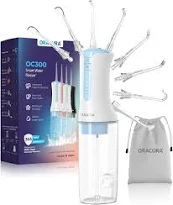What is Cosmetic Dentistry, It’s Procedures & Types
What is Cosmetic Dentistry, It’s Procedures & Types

What is Cosmetic Dentistry?
Cosmetic dentistry is a branch of professional oral care dedicated to enhancing the appearance and aesthetics of your teeth and smile. This field encompasses a variety of procedures aimed at creating positive changes in your teeth and overall smile, boosting self-confidence in the process. While many cosmetic dental procedures are elective rather than essential, they often provide restorative benefits as well.
Common cosmetic dentistry procedures include teeth whitening, dental bonding, and veneers. These treatments can effectively address issues such as stained, discolored, worn, chipped, broken, misaligned, or misshapen teeth, as well as gaps between teeth. A “smile makeover” may involve one or more of these procedures, tailored to meet the individual’s specific needs and goals, ensuring a comprehensive approach to achieving a beautiful smile.
Also aesthetic dentistry should complement the overall general and oral health of the patient, helping to maintain health, function, and appearance throughout their lifetime.
Teeth Whitening
Cosmetic teeth whitening, also known as “teeth bleaching,” is a popular procedure to
lighten teeth and enhance your smile. Over time, foods and drinks like coffee, tea, and
berries can stain teeth, making them look dull. Professional teeth whitening can
dramatically and safely lighten the shade of your teeth.
1. In-Office Whitening
In-office whitening treatments involve applying a whitening gel to your teeth. Some
dentists may also use a concentrated hydrogen peroxide solution and light to speed
up the process. This procedure typically takes between 30 and 60 minutes and offers
immediate results.
2. At-Home Whitening
At-home whitening options include whitening strips and gels that you apply to your
teeth over several days or weeks. These products usually contain carbamide peroxide
or hydrogen peroxide in lower concentrations compared to professional treatments. It’s
important to follow the product instructions and check with your dentist before using
at-home whitening products to ensure they are suitable for you.
3. Whitening Toothpaste
Whitening toothpaste contains abrasive materials that help remove surface stains. Some
also have small amounts of peroxide for additional whitening effects. These products
can help maintain the results of professional whitening treatments.
Professional and at-home teeth whitening treatments are effective ways to achieve a
brighter smile. Always consult with your dentist to choose the best method for your
dental health and whitening goals.
Dental Veneers
Cosmetic dental veneers are thin shells made of porcelain or composite material that
are custom-made and bonded to the front of teeth. They are versatile solutions for
various dental imperfections such as crookedness, discoloration, chips, and gaps
between teeth.
Types of Veneers
- Porcelain Veneers: Fitted over two visits, porcelain veneers involve removing a
small amount of enamel to ensure a natural fit. They are durable and can last up to
20 years with proper care. - Resin-Based Composite Veneers: Applied in a single visit without extensive
enamel removal. They are hardened with light and polished to match your natural
teeth color.
Benefits of Veneers
Dental veneers are ideal for those with stubborn stains, chipped, or fractured teeth
that don’t respond well to whitening. They offer a long-lasting solution to improve the
appearance of your smile.
Dental Bonding
Dental bonding, also known as enamel bonding, involves applying tooth-colored
composite resin to cover cracks, craze lines, discoloration, and other imperfections.
This procedure can change the shape of a tooth to enhance its appearance.
Procedure and Benefits
Process: Your dentist will prepare a composite resin matched to your tooth color,
apply it to the tooth surface, and shape it to cover imperfections. The resin is then
polished for a natural look.
Advantages: Requires minimal tooth preparation, making it a fast and cost-effective
way to repair minor flaws. It’s also reversible and doesn’t usually require the removal
of natural tooth enamel.
Maintenance and Considerations
Longevity: Dental bonding typically lasts five to seven years before needing replacement,
shorter than veneers.
Ideal Candidates: Suitable for those with stained, chipped, or slightly misaligned teeth
seeking cosmetic enhancement.
Tooth and Gum Contouring
Tooth Contouring
Tooth contouring, also called enamel shaping, is a cosmetic procedure that involves
removing small amounts of enamel to improve the shape and appearance of teeth. It’s
ideal for correcting minor imperfections like chipping or overlapping teeth. The process
is straightforward and typically completed in a single office visit. Your dentist will
carefully reshape the tooth using precise tools, then polish it to achieve a smooth and
natural look.
Gum Contouring
Gum contouring addresses excess gum tissue that can affect the symmetry and balance
of your smile, often making it appear “gummy.” During this procedure, your dentist gently
removes the excess tissue and reshapes the gum line to create a more proportional and
aesthetically pleasing appearance. Gum contouring can enhance the overall harmony
of your smile and is performed with minimal discomfort and immediate results.
Both tooth and gum contouring are effective cosmetic treatments to achieve a more
attractive smile. Consult with your dentist to determine if these procedures are suitable
for addressing your specific dental concerns and goals.
Dental Implants
Dental implants are titanium devices used to permanently replace missing teeth by
acting as artificial roots. Surgically implanted into the jawbone where a tooth is missing,
they provide a stable foundation for various dental restorations such as bridges or
dentures.
Types of Dental Implants
Endosteal Implants: Surgically placed directly into the jawbone.
Subperiosteal Implants: Positioned under the gum tissue above the jawbone, often
used for multiple teeth replacements.
Procedure and Benefits
A dental implant integrates with the jawbone as it heals, securely anchoring the
implanted metal post. This process provides a durable foundation for a replacement
tooth that looks and functions like a natural tooth. The placement procedure involves
sedation and local anesthesia to ensure patient comfort during this invasive process.
Consult with your dentist to explore if dental implants are the right solution for restoring
your smile and dental functionality.
Dental Crowns
A dental crown, also known as a cap, is a custom-made restoration that fits over the
entire damaged or decayed tooth above the gum line. It serves to restore the tooth’s
shape, size, strength, and appearance, preventing further damage and enhancing its
cosmetic appeal.
Types of Dental Crowns
Porcelain Crowns: Known for their durability, stain-resistance, and natural appearance.
They are less likely to cause tooth sensitivity but may be prone to chipping or cracking.
Metal Crowns: Made from metal alloys such as gold, offering superior strength and
durability, especially suitable for molars or individuals who grind their teeth. However,
their appearance may not be as aesthetic, and some people may have allergic reactions.
Porcelain-Fused-to-Metal Crowns: These crowns combine the strength of metal with
the natural appearance of porcelain. They are more durable than pure porcelain crowns
but may develop a dark line near the gums over time.
In summary, cosmetic dentistry offers a range of procedures aimed at enhancing the
appearance of teeth and smiles. From teeth whitening to veneers and implants, these
treatments cater to both aesthetic preferences and dental health needs with precision
and effectiveness. Book your appointment now.
Notifications
- Dental Awareness & Check-up Camp at North View Heights, Shela – 5th October 2025Dental Awareness North View Heights (Shela) – 05th October 2025 …
Read More "Dental Awareness & Check-up Camp at North View Heights, Shela – 5th October 2025"
- Circular for Clinic Timings – Navratri 2025🕒 Circular for Clinic Timings – Navratri 2025 The vibrant …
- Dentistium Navratri Garba Night 2025!🌟💃🕺 Dentistium Navratri Garba Night 2025 – Get Ready to …
Recent Posts
- Dental Implants: Procedure, Purpose & Benefits
 Dental Implants: Procedure, Purpose & Benefits When it comes to …
Dental Implants: Procedure, Purpose & Benefits When it comes to … - The Many Factors Influencing Patient Hygiene Practices
 The Many Factors Influencing Patient Hygiene Practices Maintaining proper hygiene …
The Many Factors Influencing Patient Hygiene Practices Maintaining proper hygiene …Read More "The Many Factors Influencing Patient Hygiene Practices"
- Enhance Your Smile with Dental Crowns: A Complete Guide
 Enhance Your Smile with Dental Crowns: A Complete Guide Your …
Enhance Your Smile with Dental Crowns: A Complete Guide Your …Read More "Enhance Your Smile with Dental Crowns: A Complete Guide"
- October 2025 (1)
- September 2025 (8)
- August 2025 (7)
- July 2025 (6)
- June 2025 (5)
- May 2025 (53)
- April 2025 (2)
- March 2025 (3)
- January 2025 (2)
- November 2024 (1)
- April 2024 (1)
44,517 hits
.
Most Searched Pharmacy products on our site
-
₹1,917.50Rated 0 out of 5
Effective Oral Care: The ORACURA Water Flosser is your go-to...
-
-
-
.
.















